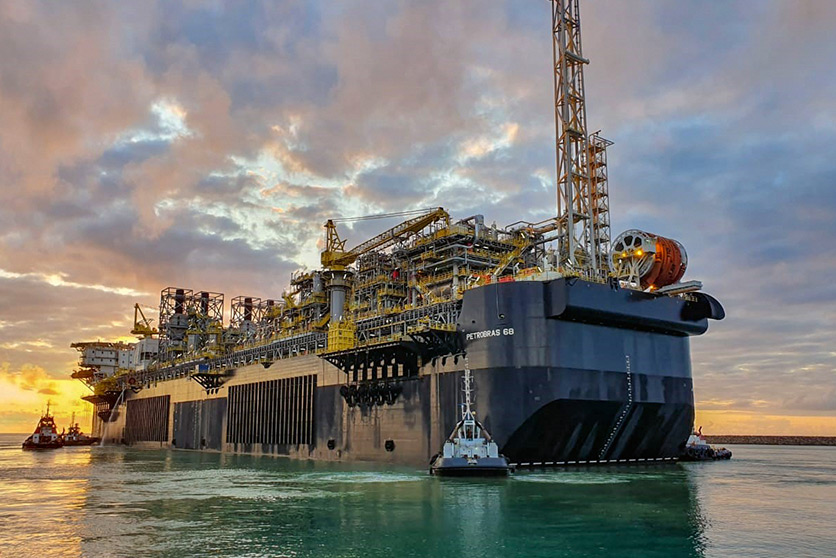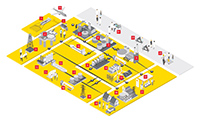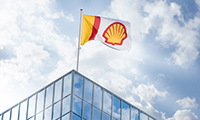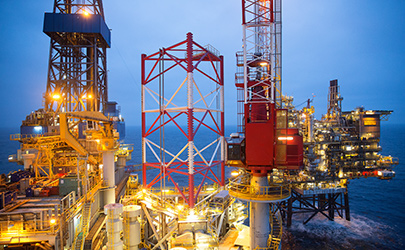Deep Water

Deep Water is a Core Upstream theme for Shell, focused on strong cash generation through a leading portfolio and development opportunities that will sustain cash flow into the coming decades.
We believe our global deep-water portfolio is on track to deliver sustained production of at least 900 thousand barrels of oil equivalent per day from already discovered fields through 2025. We expect to deliver between $7 billion and $8 billion per year in organic free cash flow by 2025 at $60 per barrel (real terms 2016) with cash capital expenditure between $4 billion and $5 billion per year over 2021 to 2025.
We are among the leading international oil companies in each of the countries where we operate – the US Gulf of Mexico, Brazil, Nigeria and Malaysia. We also have a strong development funnel to sustain our business into the next decades. For example, our nine blocks offshore Mexico are more than twice the size of Shell’s US Gulf of Mexico portfolio. We began drilling our first deep-water well there in January 2020, and have plans to drill 13 wells over the next five years.
In 2019, we opened a new frontier in the US Gulf of Mexico with Appomattox, the first commercial discovery to come online in the Norphlet formation. Appomattox realised cost reductions of more than 40% post-FID and is in a phased production ramp-up. Also in 2019, we took a final investment decision on the PowerNap deep-water project, a subsea tie-back to our Olympus platform. The project is expected to come online in late 2021. The Vito project is also progressing towards first production in 2021 with planned peak production of approximately 100 thousand barrels of oil equivalent per day and an estimated 300 million barrels of oil equivalent of recoverable resources at a forward-looking break-even price of below $35 per barrel [A]. The Whale project could replicate as much as 80% of the Vito host design. We continue to be the largest leaseholder in the US Gulf of Mexico, with access to some of the most prolific acreage in the basin.
Brazil is a new heartland in our Upstream portfolio, where we have interests in 16 active FPSOs and total Shell-share production has reached around 400 thousand barrels of oil equivalent per day. The latest FPSO to come online, P-68, can process up to 150 thousand barrels of oil and 6 million cubic metres of natural gas daily. In addition, the P-69 FPSO reached peak production levels in 2019, just over 10 months from first production. A further seven FPSOs are scheduled to come online in the 2020s. We were also awarded two blocks in the 16th concession deep-water bid round, adding to our robust portfolio of 2.6 million net acres. Exploration and drilling activities are under way in the Santos Basin, a deep-water province with low break-even prices and continued growth potential, and in the Campos and Potiguar basins.
Nigeria remains an important part of our deep-water portfolio. The Shell-operated Bonga field has produced more than 800 million barrels of oil since coming online in 2005. Through FPSO upgrades and subsea tie-backs to developments such as Bonga North West, capacity has continued to grow. Invitations to Tender for the Bonga South West/Aparo project were released in 2019. A timeframe for a potential FID will be announced after the fully termed commercial framework is agreed.
With more than 125 years of history in Malaysia, Shell pioneered the oil and gas industry in the country and fuelled its growth. Shell operates the Gumusut-Kakap deep-water field where production began in 2014. Phase 2 of the project was completed in 2019, adding four additional subsea wells to sustain its rated production of 165 thousand barrels of oil equivalent per day while realising cost savings of more than 35% since FID in 2017. Shell also announced a decision to invest in a second phase of the Malikai deep-water development, which is expected to come online in 2021.
As our global Deep Water business grows, we are actively managing our CO2 intensity from deep-water assets, including considerations for new project designs, ongoing producing operations, and latelife assets.

FPSO P-68, offshore Brazil. Photo from Agência Petrobras
[A] The forward-looking break-even price for pre-FID projects is calculated based on all forward-looking costs associated with pre-FID projects in our development portfolio. Accordingly, this typically excludes exploration and appraisal costs, lease bonuses, exploration-seismic and exploration-team overhead costs. The forward-looking break-even price for pre-FID projects is calculated based on our estimate of resources volumes that are currently classified as 2C under the Society of Petroleum Engineers’ Resource Classification System. As these pre-FID projects are expected to be multi-decade producing projects, the projection of less than $35 per barrel will not be reflected either in earnings or cash flow in the next five years.
 Our businesses and organisation
Our businesses and organisation
 Overall highlights in 2019
Overall highlights in 2019
 Projects & Technology overview
Projects & Technology overview
 Financial data
Financial data
